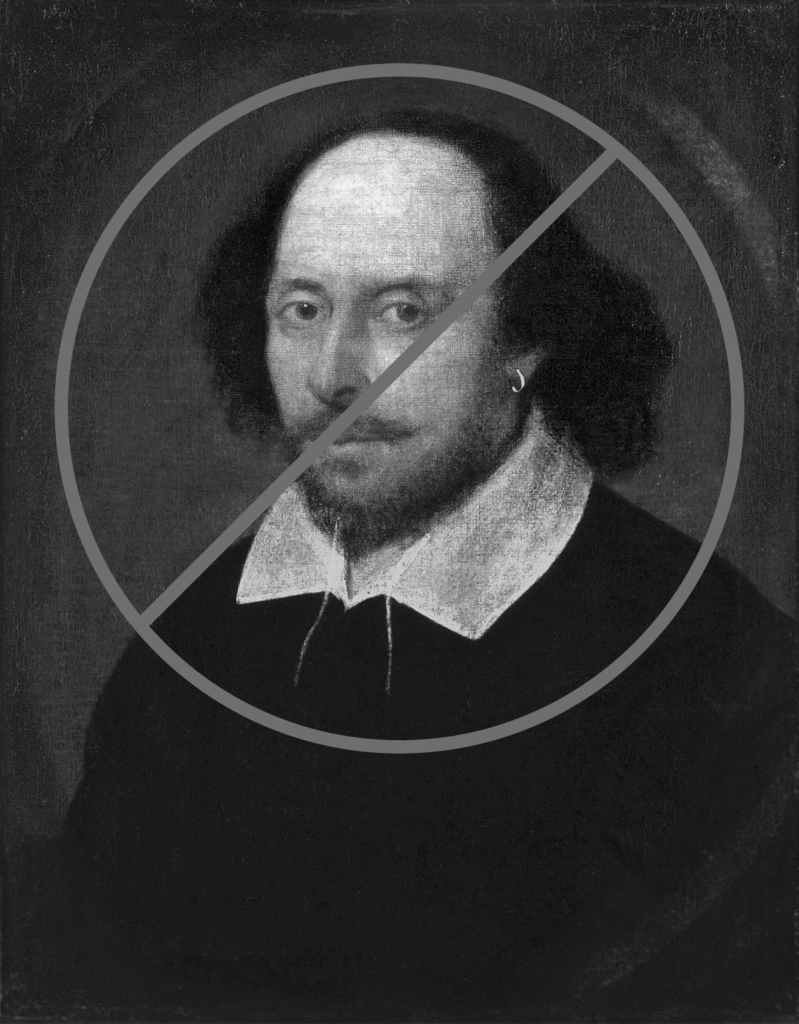Does the idea of altering or editing the works of Shakespeare make you nervous? Dive into the history of variable texts, inconsistent printing, censorship, and near-constant revision and start wondering if “original Shakespeare” even exists!

Many modern audience members get nervous when they hear about Shakespeare plays being cut, edited, or adapted for a specific production. The reality, however, is that holding the text of these plays loosely is exactly in line with the tradition of Shakespeare performance. From scribes sitting in the audience recording furiously (and adding their own flair) to actors inserting asides about their own upcoming performances and notable news stories before running off to the print shop to “sell their version,” even while Shakespeare was alive, his writing was not treated very delicately.
Then, in 1623, seven years after William Shakespeare’s death, actors John Heminge and Henry Condell got together to print their First Folio and boasted that the plays in their collection were “cur’d, and perfect of their limbes.” Heminge and Condell, however, silently included many non-Shakespearean alterations and either glossed over—Henry VIII—or did not include—Pericles, Two Noble Kinsmen, Sir Thomas More—plays on which Shakespeare collaborated with other dramatists. This was certainly not the first time anyone tried to pass off their own version of a perfect, authoritative “Shakespearean” script, and it was far from the last.
But even this first, most “authoritative” collection is not the pillar of consistency many audiences like to imagine. It was drawn from many sources—manuscripts, transcripts, prompt books, memorial reconstructions, annotated quartos—and was handled by print house apprentices, who painstakingly placed each letter and space by hand. Once a page had been assembled, the printing began while a head printer corrected the first pressing. There was no time to waste, and even fewer materials, so the uncorrected pages rolled off the printer until the proofing was finished. Once the changes were made, the printing began again, but the first, uncorrected, pages weren’t tossed away. They were instead shuffled with the corrected pages, meaning that of the approximately 235 copies of the First Folio that still exist, each one is unique.
Editing and printing, however, lived right alongside government censorship of Shakespeare’s more political work. As early as the 1590s, The Master of the Revels would regularly control what could (or couldn’t) be performed on London stages, including the highly controversial Richard II, which was challenged directly by Queen Elizabeth! In fact, it was censored so often that has more printed versions than any other Shakespeare text in the Early Modern era.
From the Second Folio through much of the 18th Century, editions descended directly from one to the next, with editors using only personal judgment to emend them. These editors modernized spelling, corrected errors, and never asked what could have been intentional, even desirable, to an Early Modern reader. The texts were cut, emended, and added to, each carefully tailored to the contemporary sensibilities of the editors and the times.
One of the biggest figures in Shakespeare performance history – famous actor David Garrick – played Macbeth in 1744 and made waves by claiming to produce the show “as Shakespeare wrote it,” which (in his mind) allowed him to remove some (but not all) of the changes made by an earlier editor, and, since he wasn’t satisfied by his number of lines, he added a final monologue for the condemned king. As Shakespeare wrote it, indeed!
So when you hear about Henry IV being performed in one part instead of two, or you raise an eyebrow at Imogen complaining about “Big Dick Energy” in Cymbeline, or you wonder why characters have swapped pronouns or lines, just remind yourself that nothing’s really changed at all.
